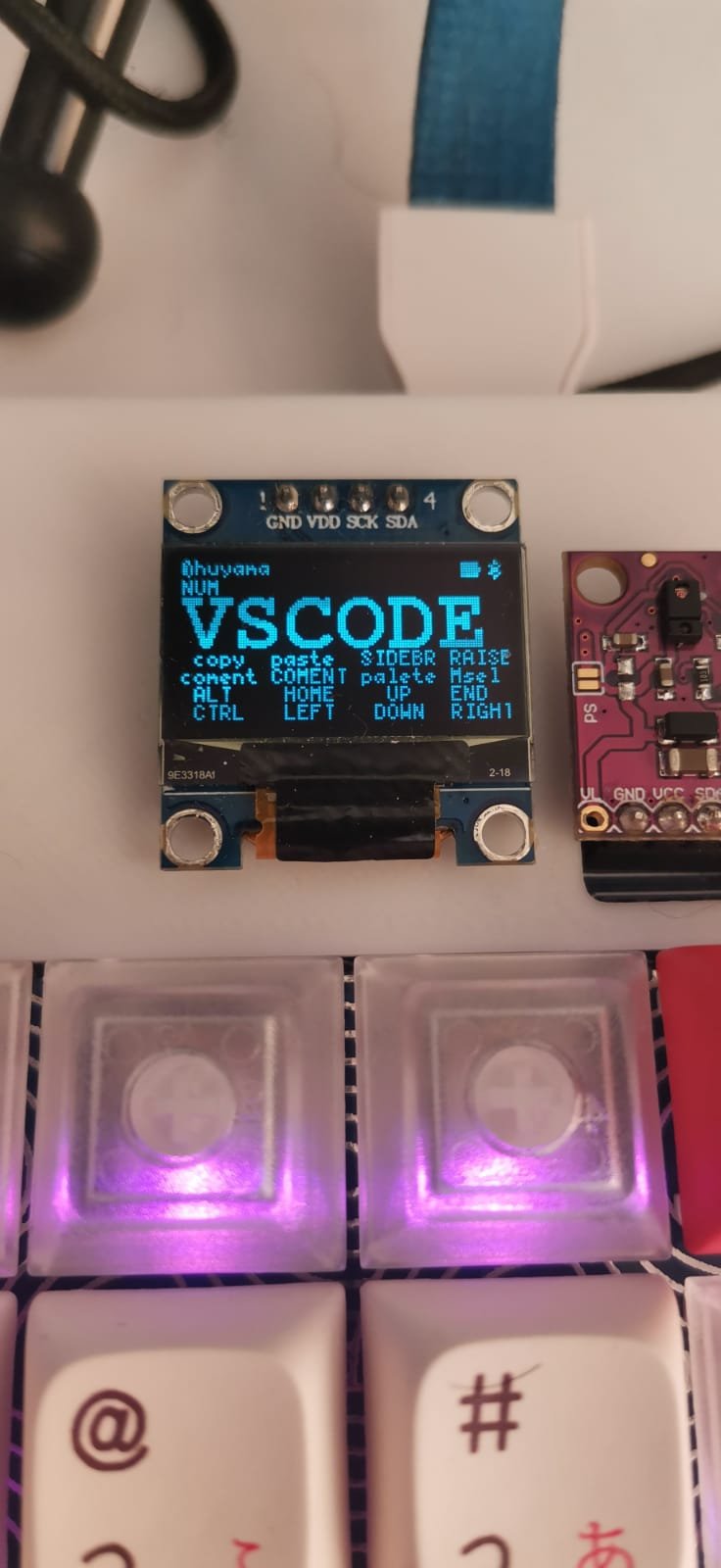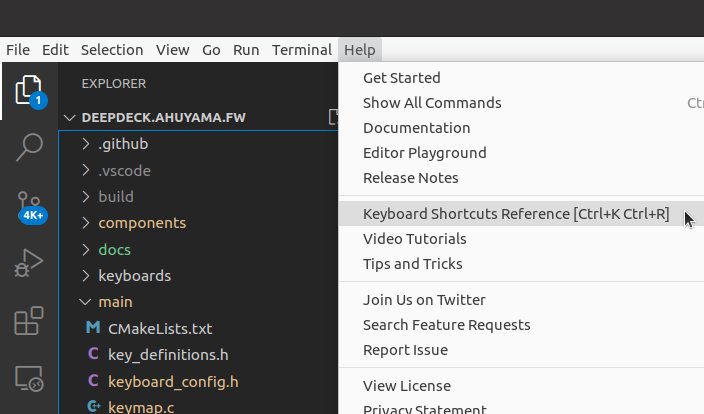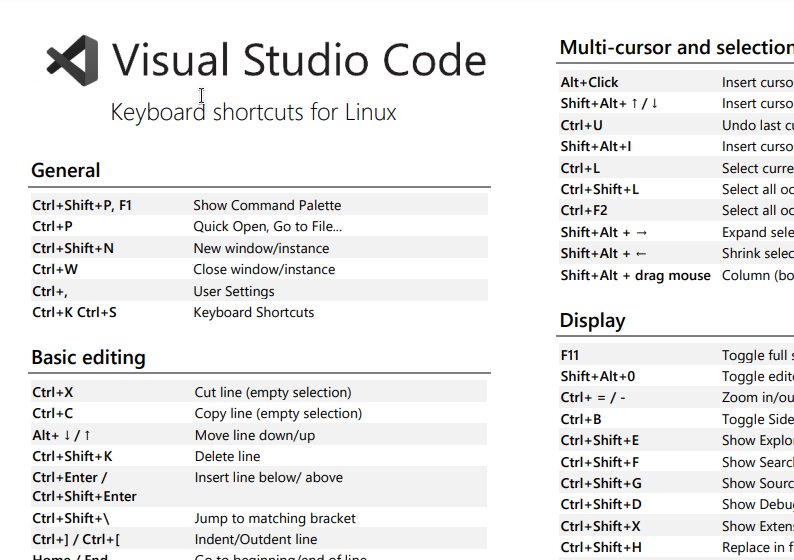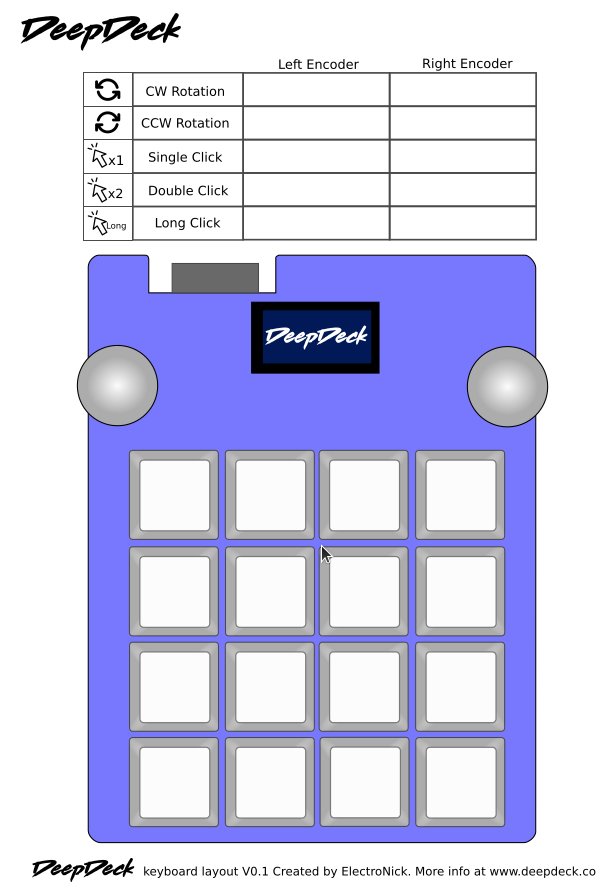Hi everyone!
In this first week, we want to thank our backers, your support means a lot for us! If you haven’t backed us yet, feel free to ask any questions you might have to convince you having a DeepDeck is a must.
One of our backers send us a question that made us integrate a new feature into the project. She asked us if we could integrate the name of the keys on the OLED, so we did!
We also wanted to show the process of integrating a new layer into DeepDeck. We are going to make it with Visual Studio Code.
1. Explore
First of all, it’s good to explore which shortcuts are available first.
After inspecting the list of shortcuts, I found some very interesting and useful commands.
2. Filter
Ok, so you can’t have all the shortcuts in one layer (you could have several layers, but that might not be convenient). You have to decide what is best, where (a key, a knob, what key?). You can do it directly with DeepDeck’s web app, but some people like to write on paper first. That’s why we made a simple layout (pdf) so you can try and write things down if you desire.
3. Test & Iterate
Once you have programmed your keys and shortcuts, try them out to see if you feel comfortable or if you are missing something. If needed, you can go back and program them again in the web app.
4. Results
Well, now you can play with, work with, and see if the layout is good for you, or adapt it as you please. I would have to say that the code surfing is my favorite shortcut, and the one that will save me the most time!
(FYI, the video above is also available on YouTube.)



